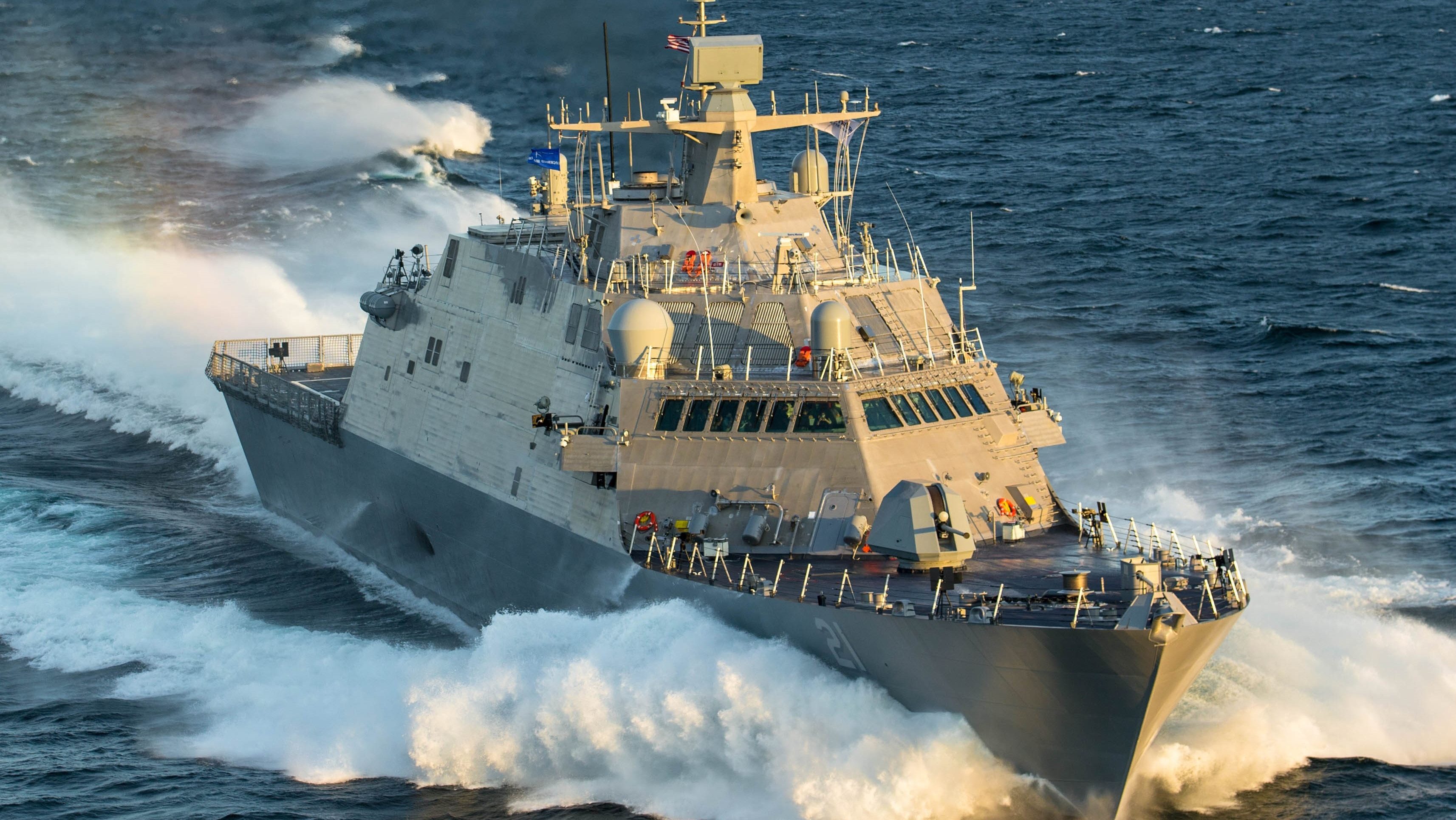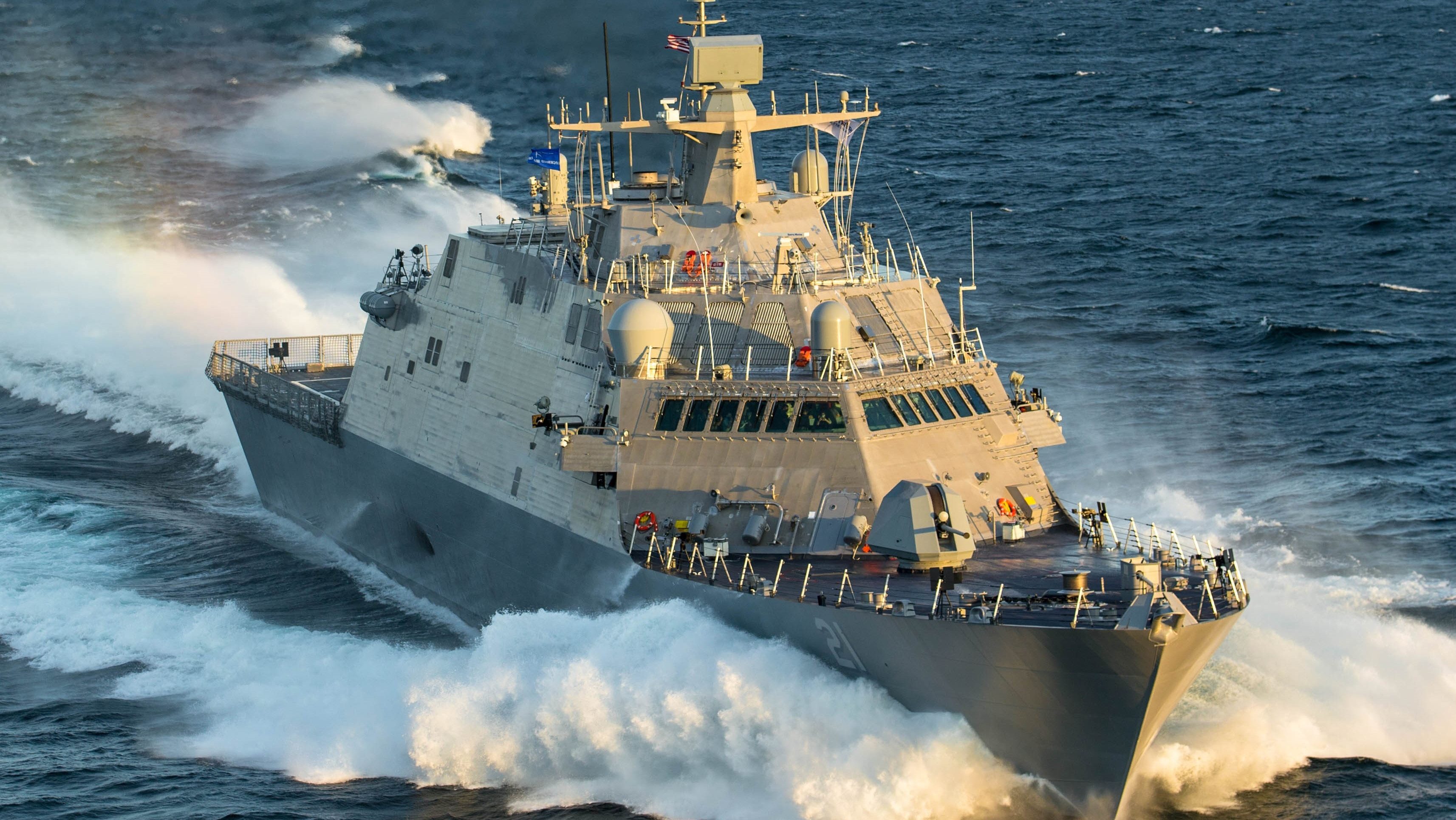

The oft-maligned Littoral Combat Ship, or LCS, may have found its true calling: chasing down smugglers.
USS Minneapolis-Saint Paul, a Freedom-variant LCS, recently stopped two suspected drug smuggling operations within 72 hours “through a combination of air and surface operations” while deployed to the Caribbean, according to the Navy.
A Coast Guard Law Enforcement Detachment that is embarked aboard the ship and Helicopter Maritime Strike Squadron 50, Detachment Three helped the Minneapolis-Saint Paul seize nearly 1,279 pounds of cocaine worth about $9.5 million along with 2,480 pounds of marijuana worth roughly $2.8 million, according to an April 17 Navy news release.
The successful operation is one of several examples in recent years of an LCS nabbing drug smugglers. In 2020, USS Gabrielle Giffords stopped a vessel in the Eastern Pacific that was carrying $106 million worth of suspected cocaine. In 2021, USS Wichita and USS Sioux City seized $17 million and more than $20 million worth of suspected cocaine, respectively in the Caribbean Sea.
Not a bad haul for Littoral Combat Ships, vessels long beset by problems, including a serious design flaw in the Freedom-variant’s propulsion system, prompting the Navy to decommission some of the ships after a short lifespan. The Sioux City was mothballed in 2023 after only five years of service.
The LCS’s reputation was so bad four years ago that then-Chief of Naval Operations Adm. Michael Gilday suggested to lawmakers that the service give the ships to other countries that “would be able to use them effectively.”
But the LCS is “almost perfectly made” for operations against drug smugglers, said Brian Persons, who previously served as the civilian chief engineer and executive director of Naval Sea Systems Command and later became deputy chief of naval operations for warfare systems.
“Eventually, these ships, they find their place and niche in the warfighting world,” said Persons, who is currently a senior management scientist with the RAND Corporation.
The Navy selected two different hull designs for Littoral Combat Ships: The Freedom- and Independence-variants. Freedom-class ships are among the smaller warships in the Navy. At 387 feet long, they are more than 100 feet shorter than an Arleigh Burke-class destroyer and displace less than half of the total tonnage, 3,400 tons to a destroyer’s 8,400.
But Littoral Combat Ships are fast, carry embarked helicopters and are brimming with air- and surface-search radar, all of which are helpful for nabbing drug smugglers, who tend to use go-fast boats and rudimentary submersibles, Persons told Task & Purpose.
The ships are also armed with missiles, though they are unlikely to use them against drug smugglers due to the costs of the munitions, he said.
Of all the Navy’s warships, the LCS is probably the best choice for counternarcotics missions, said Persons, who explained that destroyers and cruisers are expensive ships that are designed for “high-end” combat, such as ballistic missile defense.
Also, drug smugglers tend to focus on speed in hopes of eluding detection rather than fighting back against pursuers, unlike military forces in China and Russia, which have advanced anti-ship weapons, Persons said.
“It would be extremely overkill for a destroyer or cruiser to go do counternarcotics missions,” Persons said. “They could do it, but the Littoral Combat Ship system would be a better employment of assets for the U.S. Navy.
While drug cartels currently do not pose a serious threat to U.S. Navy ships, that may not remain true forever, said James Holmes, the J. C. Wylie Chair of Maritime Strategy at the U.S. Naval War College in Newport, Rhode Island.
“If the Russia-Ukraine war and the operation in the Red Sea have shown anything, it’s that naval warfare has been ‘democratized,’” Holmes told Task & Purpose. “Capabilities once available only to great powers are becoming available to many contenders.”
Ukraine has managed to inflict losses on Russian ships using shore-launched missiles and drones, even though it does not have a significant navy itself, Holmes said. And Houithi rebels in Yemen have used missiles and drones to challenge Western navies, even though they have not hit any warships so far.
“Now, I doubt drug cartels will ever field antiship cruise or ballistic missiles, but they could well deploy cheap surface, air, or even subsurface drones against littoral combat ships,” Holmes said. “LCS has been doing pretty well now that it has found its niche, but these are very lightly armored warships. The trimaran variant, the Independence class, even has an all-aluminum hull and a legacy of hull cracking. These are not rugged ships. So, I hope we aren’t getting complacent during drug interdiction operations.”
